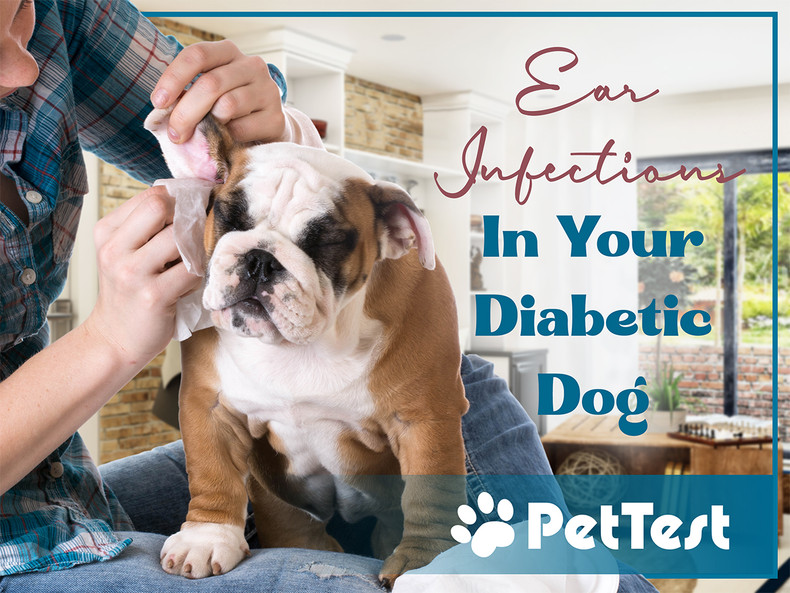Ear Infections In Your Diabetic Dog
This is a topic that I needed to look into as neither of my boys ever had ear troubles. I count myself as blessed because I never had to deal with this issue. For those of you who do deal with it, I am so sorry. From what I have read, this issue is much like most in that with proper maintenance, it can be avoided.
Part of the reason that ear issues are nearing “epidemic” status in dogs is because of how their ear canal is structured. Unlike humans, their ear canal is L shaped with wax secreting glands all along the canal. There is also hair that helps the junk move up and out. The hard part is that the junk has to make a 90 degree turn to get up and out of the ear canal.
A healthy ear canal is pink and has no unpleasant odor. If you notice that your pup is shaking their head, rubbing their ears on the floor or furniture, you’ll want to take a closer look in their ears. If you see a red ear canal as opposed to a healthy pink one and there is an odor, you’ll want to get them in to the vet to get this under control before it progresses to a chronic problem.
There are two kinds of basic ear problems in dogs; chronic inflammation and infection. Untreated inflammation can lead to infection. If your pup’s ears are warm to the touch, red, swollen or itchy yet there is no discharge, it’s likely inflammation. Now if one of those signs is present along with discharge and odor, it is likely an infection.
What causes inflammation in dogs ears? Wax accumulation for one. Some dogs need to have their ears cleaned out more frequently than others. If you have a “water dog”, meaning one that loves being in the water, you will need to get them used to having their ears cleaned while they are a puppy. Other breeds that are prone to wax buildup are Bulldogs, Poodles and Cocker Spaniels.
“Swimmers ear” is commonly seen in the summer months when our pups are playing in the water. Wet ear canals and warm body temperature makes the perfect environment for ear problems. It’s important to thoroughly dry your pup’s ears any time they have been out in the rain, swimming or just had a bath.
Allergies are the most common cause of ear problems in dogs. A food or environmental allergy will cause inflammation throughout your dog’s body, including the ears. Allergy induced ear issues exhibit the same way that the others do… shaking the head, rubbing along furniture or the floor, etc.
Fungal infections - when inflammation advances to infection, it’s important to get your dog to the vet to be diagnosed. Yeast is the most common cause of an ear infection. If your pup is prone to yeast infections, it’s important to clean the ears daily. Because our dogs are immuno-compromised from diabetes, yeast or bacteria can overgrow the ears. To get an accurate diagnosis of any type of these ear infections, a culture is in order. The culture will be sent out and diagnosed. It’s important to keep the ears clean while treating the infection or inflammation so the medication can get into the ear canal and do its job. Also important in treating ear infections is that you finish the medication. Don’t stop giving it half way through.
How can we stay on top of these ear issues? We must check our pup’s ears every day. If they don’t produce enough wax to clean them every day, then check them every day and clean them when necessary.
Never use rubbing alcohol to clean your dog’s ears. It can cause burning and irritation especially if the skin is inflamed. Use cotton balls or cotton rounds only to clean the inside of the ear canal. Never use a swab or you can damage the eardrums.
The best way to clean out your dog’s ears is to saturate the cotton ball or round with a cleaning solution and wipe out the inside of the ear. Use as many cotton balls or rounds as it takes to clean the ears and it comes clean.
Like with most things, prevention is worth doing for ear issues, not only for the comfort of your pup, but for your pocketbook. Ear infections can be costly to treat, so take the steps to keep them away. You and you pup will both be glad that you did!
Don’t forget to check out our Facebook page for the daily questions and for the weekly giveaways.
You’ll notice that for most of the products or groups that I mention, the text is linked to a website where you can purchase that item or a link to join the group mentioned. Just click on the colored text (red or blue, depending what device you are on) and it should take you right to the item or group. If you have any thoughts or ideas for topics that you’d like to see covered here, please feel free to comment below or send me an email at NancyForPetTest@PharmaSupply.com. As always, please “like” this blog post or any of the others that have helped you or just refreshed your memory. Look for new posts every Tuesday.
Until next time…

